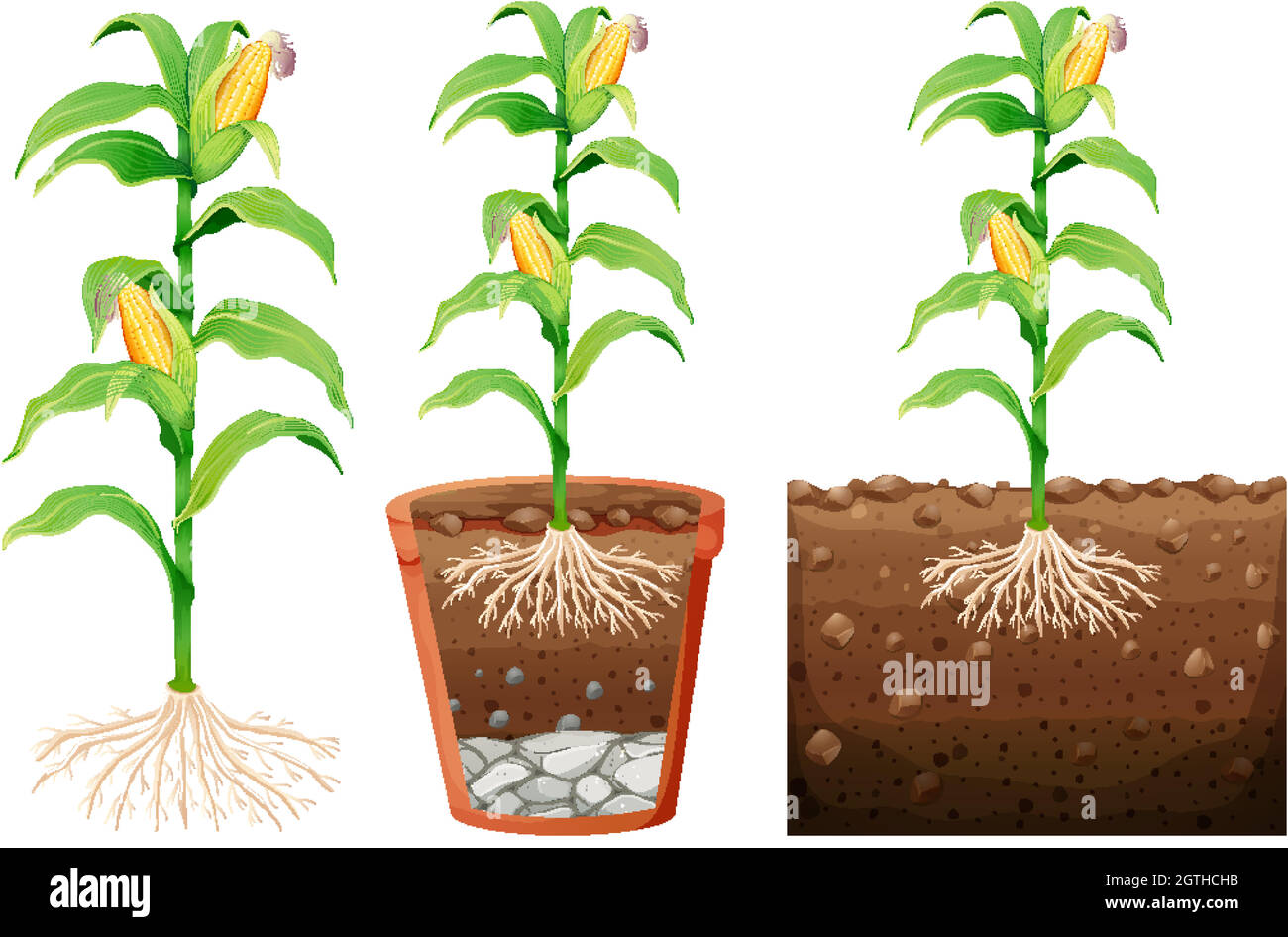The corn plant root system, the hidden powerhouse beneath the towering stalks, is a marvel of nature that plays a pivotal role in the growth and productivity of this essential crop. Join us as we delve into the intricate world of corn roots, exploring their anatomy, functions, and the fascinating interplay with soil health.
From the primary roots that anchor the plant firmly in the ground to the intricate network of secondary and tertiary roots that extend like a vast subterranean web, the corn plant root system is a masterpiece of adaptation. Each component plays a crucial role in absorbing water and nutrients, storing carbohydrates, and ensuring the plant’s overall health and vigor.
Corn Plant Root System Overview

The corn plant’s root system is an intricate network of roots that plays a vital role in anchoring the plant, absorbing water and nutrients from the soil, and storing carbohydrates for future use.
The root system consists of three main types of roots: primary, secondary, and tertiary roots.
Primary Roots
Primary roots are the first roots to emerge from the seed and grow downward into the soil. They are typically thick and fleshy and serve as the main anchor for the plant.
Secondary Roots
Secondary roots emerge from the primary roots and grow laterally through the soil. They are thinner and less fleshy than primary roots and help to absorb water and nutrients from the soil.
Tertiary Roots
Tertiary roots are the smallest and most numerous type of root. They emerge from the secondary roots and further increase the surface area for absorption of water and nutrients.
The corn plant’s root system is a complex and dynamic organ that plays a vital role in the plant’s growth and survival.
Factors Affecting Corn Root System Development

The development of the corn root system is influenced by a complex interplay of environmental factors and agricultural practices. Understanding these factors is crucial for optimizing root growth and ensuring high crop yields.
Environmental Factors
- Soil Type: Soil texture, structure, and pH greatly impact root development. Sandy soils promote deep root penetration, while heavy clay soils hinder root growth. Optimum pH for corn root development ranges from 6.0 to 6.8.
- Moisture: Adequate soil moisture is essential for root growth. Waterlogging can lead to root rot, while drought stress can restrict root elongation and water uptake.
- Temperature: Soil temperature influences root growth rates. Optimal temperatures for corn root development range from 60 to 80°F (16 to 27°C).
Agricultural Practices
- Tillage: Tillage practices can alter soil structure and compaction, affecting root growth. No-till or reduced tillage systems promote deeper root penetration, while excessive tillage can compact the soil and hinder root development.
- Fertilization: Nitrogen, phosphorus, and potassium are essential nutrients for corn root growth. Balanced fertilization promotes healthy root development and nutrient uptake.
- Irrigation: Irrigation management is critical for maintaining optimal soil moisture for root growth. Proper irrigation schedules ensure adequate water supply without waterlogging.
Varietal Differences, Corn plant root system
Different corn varieties and hybrids exhibit variations in root system development. Some hybrids have been bred to possess more extensive root systems, which can enhance drought tolerance and nutrient uptake.
Corn Root System and Soil Health: Corn Plant Root System

The corn root system plays a crucial role in maintaining soil health and ecosystem functioning. It interacts extensively with soil microorganisms, contributing to nutrient cycling, soil aggregation, and overall soil fertility.
The extensive network of fine roots releases root exudates, a complex mixture of organic compounds, into the soil environment. These exudates serve as a food source for beneficial soil microorganisms, such as bacteria and fungi, stimulating their growth and activity. In turn, these microorganisms break down organic matter, release nutrients, and enhance soil structure.
Role of Root Exudates in Nutrient Cycling
Root exudates contain a variety of organic acids, sugars, and amino acids that can chelate nutrients, making them more available for plant uptake. For example, citric acid released by corn roots can dissolve phosphorus bound to soil particles, increasing its bioavailability. Additionally, root exudates can stimulate the activity of mycorrhizal fungi, which form symbiotic relationships with plant roots and facilitate nutrient absorption.
Formation of Soil Aggregates
Root exudates also play a role in the formation of soil aggregates. They act as binding agents, gluing soil particles together and creating a stable soil structure. This improved soil structure enhances water infiltration, aeration, and nutrient retention, creating a more favorable environment for plant growth.
Recommendations for Managing the Corn Root System
To promote soil health and sustainable agriculture, it is essential to manage the corn root system effectively. Here are some recommendations:
- Maintain adequate soil moisture: Optimal soil moisture levels promote root growth and activity, ensuring a healthy root system and nutrient uptake.
- Avoid excessive tillage: Tillage practices can disrupt the root system, reducing its effectiveness and harming soil health. No-till or reduced-till systems minimize soil disturbance and preserve the root system.
- Provide organic matter: Incorporating organic matter into the soil, such as compost or manure, provides a continuous source of nutrients and supports microbial activity, benefiting the root system and soil health.
- Use cover crops: Cover crops help maintain soil moisture, suppress weeds, and contribute to soil organic matter, creating a favorable environment for root growth.